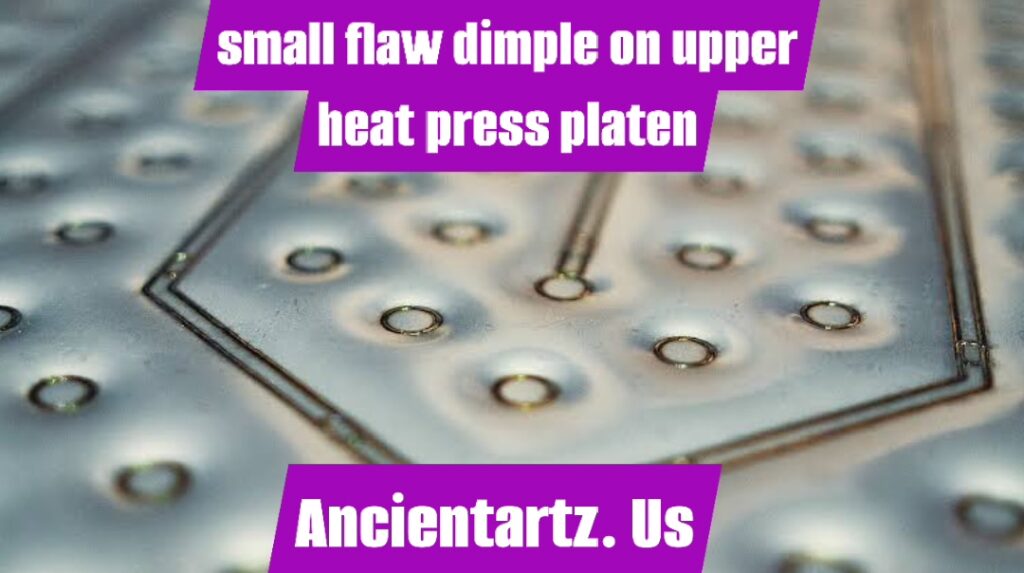Introduction
A heat press machine is an essential tool in the printing and garment industry, widely used for transferring designs onto various materials with precision and efficiency. However, despite the robust nature of these machines, certain imperfections can arise over time or during the manufacturing process. One such common flaw is the presence of a small dimple on the upper platen of a heat press. While this might seem like a minor issue, it can have significant implications for the quality and consistency of heat transfers. This article explores the nature of these dimples, their impact on printing operations, potential causes, preventive measures, and solutions to ensure smooth and flawless printing results. By thoroughly understanding this issue, heat press operators and business owners can take appropriate steps to minimize disruptions and maintain the highest printing standards.
A small flaw dimple on upper heat press platen may not always be immediately noticeable, but it can create inconsistencies in heat and pressure distribution, leading to defective prints. The presence of this imperfection can result in uneven transfers, peeling designs, and dissatisfaction among customers. Given the precision required in heat pressing, even a seemingly minor flaw can compromise the overall printing quality. Furthermore, it is crucial to differentiate between minor cosmetic imperfections and significant defects that can hinder the efficiency of the heat press machine. Identifying the severity of the issue early on can prevent costly mistakes and production delays. This article aims to provide a comprehensive analysis of the problem, from understanding its root causes to implementing practical solutions, ensuring that heat press users can continue producing high-quality prints with confidence.
Understanding the Impact of a Small Dimple on the Upper Heat Press Platen
How a Dimple Affects Heat Distribution and Pressure
One of the primary concerns with a small flaw dimple on upper heat press platen is the potential disruption in heat distribution. Heat press machines rely on uniform heat to transfer designs effectively, ensuring that each part of the substrate receives consistent heat and pressure. A dimple, even if small, can lead to temperature variations, causing some areas of the transfer to adhere correctly while others remain improperly bonded. This can result in defective prints where parts of the design may peel off prematurely or display inconsistencies in color and texture. In industries that depend on high-quality heat transfer applications, such imperfections can be costly, leading to reworks, wasted materials, and reduced customer satisfaction. Additionally, pressure inconsistencies caused by the dimple can impact the depth and adherence of prints, particularly for thicker materials like hoodies and canvas bags, which require precise pressure settings.
Causes of Dimples on the Upper Heat Press Platen
The appearance of a dimple on the upper platen can stem from various factors, including manufacturing defects, prolonged usage, and improper maintenance. Some heat press platens may develop these imperfections during the manufacturing process, especially if the metal is not treated correctly or if air pockets are trapped during molding. Poor quality control during production can result in subtle defects that only become noticeable after repeated use. In other cases, prolonged exposure to high temperatures and constant pressure can gradually deform the platen, leading to surface irregularities. Additionally, external impacts, such as accidentally dropping a hard object on the platen, can cause localized dents that develop into dimples over time. Proper storage, regular inspections, and careful handling of the machine are essential to prevent these defects from occurring or worsening.
How to Identify the Severity of the Dimple
Not all dimples on the upper platen have the same level of impact on heat pressing operations. Some are purely cosmetic and do not significantly affect performance, while others can interfere with the uniformity of heat transfers. Identifying the severity of a dimple requires a thorough inspection of the platen surface. Running a hand over the platen can help detect any irregularities, while using a heat-resistant temperature gun can reveal variations in heat distribution. Another effective method is performing a test press using a blank sheet to check for uneven pressure spots. If the issue is minor and does not compromise transfer quality, it may not require immediate attention. However, if significant defects are detected, prompt corrective measures should be taken to prevent flawed prints and customer dissatisfaction.
Preventive Measures to Avoid Dimples on the Heat Press Platen
Prevention is always better than cure when dealing with heat press machine maintenance. One of the most effective ways to prevent dimples from forming on the upper platen is by investing in a high-quality machine from reputable manufacturers that prioritize quality control. Regular maintenance, including cleaning the platen with a soft cloth and avoiding abrasive materials, can also prolong its lifespan and minimize surface imperfections. Properly storing the heat press in a dust-free environment and covering it when not in use can prevent the accumulation of debris that may contribute to surface damage. Additionally, using protective sheets or Teflon covers during pressing can help distribute pressure evenly, reducing the risk of localized stress points that might lead to dimples over time. Implementing these preventive measures ensures that the heat press platen remains in optimal condition, reducing the likelihood of defects that can impact printing quality.
Solutions for Repairing or Managing a Dimple on the Upper Platen
For heat press operators who have already identified a dimple on their machine, several solutions can help mitigate its impact. In cases where the dimple is minor, using a heat-resistant pressing pillow or additional padding can compensate for the uneven pressure and maintain consistent transfers. Some professionals opt for silicone heat mats that provide an extra layer of cushioning, helping to even out pressure inconsistencies. If the dimple is more severe, consulting the manufacturer for possible platen replacement options is advisable. In some cases, resurfacing the platen using professional-grade sanding tools may help restore a smooth surface, though this should only be attempted by experienced technicians to avoid further damage. Understanding when to repair versus when to replace the platen is crucial in ensuring optimal heat press performance without unnecessary downtime.
Conclusion
The presence of a small flaw dimple on upper heat press platen might seem like a minor flaw, but its impact on heat transfer quality can be significant. Uneven heat and pressure distribution can lead to defective prints, reduced product lifespan, and increased material waste, ultimately affecting business profitability. By understanding the potential causes of this issue, including manufacturing defects, wear and tear, and improper handling, heat press operators can take proactive steps to minimize the risk of platen imperfections. Preventive measures such as regular maintenance, protective coverings, and careful machine handling can help preserve the platen’s integrity, ensuring consistently high-quality transfers. When a dimple does occur, assessing its severity and implementing suitable solutions—such as using pressing pillows or resurfacing techniques—can mitigate its effects and maintain printing efficiency.
Ensuring that heat press machines remain in top condition is essential for businesses that rely on high-quality heat transfers. Even minor defects can result in significant production challenges, making it crucial for operators to stay informed about common platen issues and their solutions. By maintaining a proactive approach to heat press care, businesses can uphold high standards of quality, reduce downtime, and maintain customer satisfaction. Investing in high-quality equipment, adhering to proper maintenance practices, and promptly addressing platen imperfections will ultimately contribute to a smooth and efficient printing operation.
Frequently Asked Questions (FAQs)
1. How do I know if a dimple on my heat press platen is affecting my transfers? You can test by performing a blank heat press and checking for uneven heat distribution or pressure inconsistencies. If the transfer results show gaps or incomplete adhesion, the dimple is likely causing issues.
2. Can I fix a dimple on my upper platen myself? Minor dimples can sometimes be managed using pressing pillows or silicone heat mats. For severe cases, consulting a technician or replacing the platen may be necessary.
3. What causes dimples to form on a heat press platen? Dimples can form due to manufacturing defects, prolonged heat exposure, accidental impacts, or wear and tear over time.
4. How can I prevent platen imperfections? Regular maintenance, using protective sheets, storing the machine properly, and avoiding abrasive cleaning materials can help prevent imperfections on the platen.
5. Should I replace my heat press if I find a dimple on the platen? Not necessarily. Assess the severity of the dimple and try alternative solutions first. If the defect significantly affects printing quality, replacing the platen or machine may be required.
Also Read This: Understanding and Addressing Dimples on the Upper Heat Press Platen



